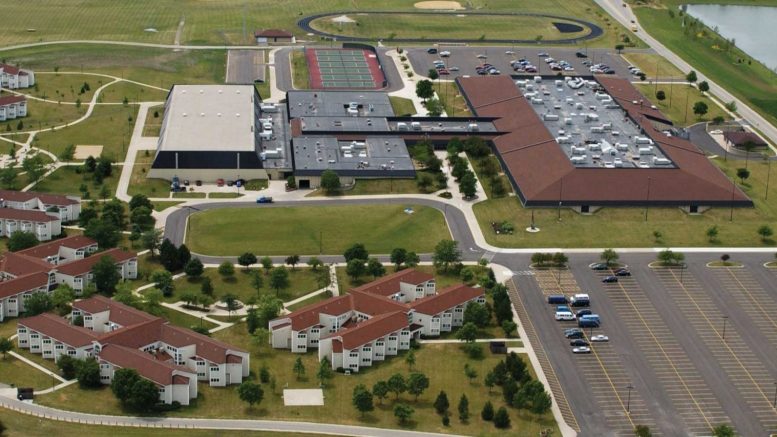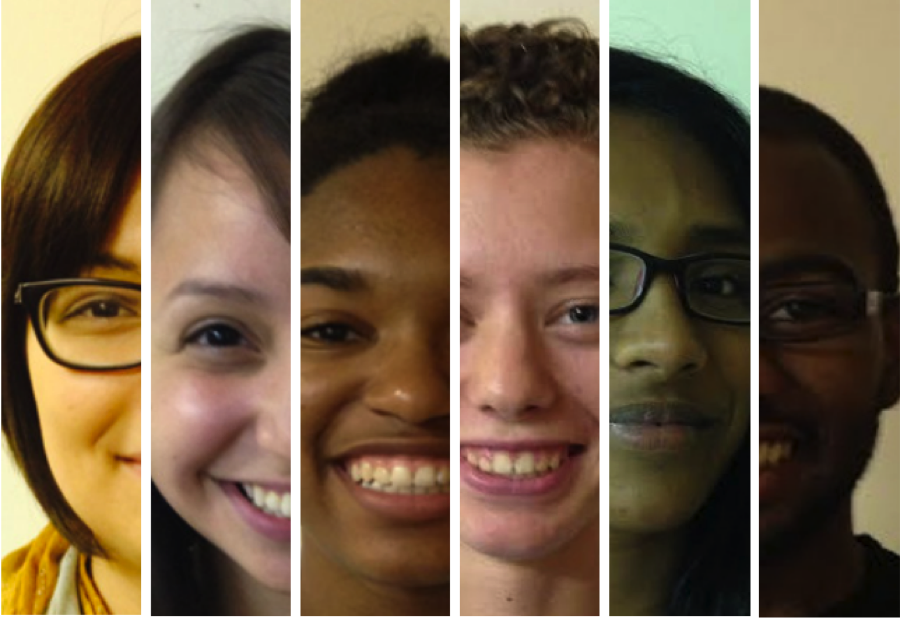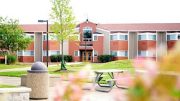In this interview, staff writer Pietro Stabile (PS) speaks with IMSA President Dr. Evan Glazer (EG) about IMSA’s recent appropriations hearing with the Illinois House of Representatives. A bulk of the funding requested by IMSA will be funneled into the construction of a new residential hall, while the rest will be allocated to day-to-day operations, wage increases, general renovations, and so forth. Stabile and Dr. Glazer cover the plans for a new residential hall, its general outlook, and implications for IMSA as a school. The following transcript has been edited for clarity and length.
PS:
First of all, what is the nature of this proposal if it’s more complicated than just a new residential hall?
EG:
At the core, we’re interested in replacing the residential halls with new construction. Now, that may take a long time to develop. For some context, the residence halls were originally built to last 25 years. They’re now 35 years old. Similar to having a vehicle, when it gets old, you get to a certain point where you start putting in a lot of repairs. Then you ask yourself whether it’s just better to create something new by buying a new car or creating new residence halls, right? So that you don’t have to constantly make all these repairs. Our interest is to get new residence halls.
There are different options. One way is to build an extra hall right now called 1508. And then, after that’s built, we can gradually start getting more money to build others. We could do this by inviting out-of-state students who are tuition-paying. That’s one approach.
Another way is to build a different structure of residence halls with 200-bed units that would make them more unified and connected. We would have four connected buildings in a big rectangle. Students would reside on floors two and three, and there would be shared residential living spaces on floor one that have different purposes like lounge areas, study areas, and a mini cafe. And they would all be connected, so that any student on campus can experience the lower floor of all of the four buildings. It would be a student life area.
So that’s another approach. That’s actually what we desire, but we need the money. An alternative approach is to just continue upgrading the existing facilities as best we can with the money we have available. We will know by the end of the school year how much financing we can obtain.
PS:
You said you want to expand the number of students served by IMSA by potentially accepting out-of-state applicants. Would IMSA still have 650 spots reserved for Illinois students, as it is now, or would admissions be open to the entire nation for all 800 spots?
EG:
The legislation says that IMSA enrollment should always be at least 75% Illinois students, and those Illinois students will be at no cost. We’re currently exploring options to see if we can have out-of-state students enroll in the future before the completion of a facility by looking for space within the existing facilities, but there wouldn’t be that many. We’re pretty squeezed already.
PS:
In the meantime, before you raise the funds for this construction project, how are you going to improve what we already have with the $15 million?
EG:
I mean, we have to make sure that everything is properly functioning. Whenever there are things that need to be repaired, we’re constantly putting money into them. If you want specific examples, I would connect you to our facilities people. Like my previous analogy, though, if you have an old car, periodically things break down, and then you have to pay to fix them. After a while, you tell yourself that you should just get something new because you’re putting so much money into an old car. You’re not saving anything and just keeping it old.
PS:
So the real difficulty here is obtaining the funds?
EG:
That’s correct. So right now, I am exploring what funds we can get to determine how much we could build. We have $15 million; we know that could build 1508, right? However, I’m trying to see if I can secure more to start a bigger project that’s not just 1508.
The challenge is that we don’t have enough money. Right now, it costs roughly $130 million to create residence halls for 800 students. Now, I say 800 rather than 650 because our interest is to grow in capacity over time. Out of the $130 million, we have $15 million allocated. We’re far off. So, if you have a friend with $115 million, we will get started on this project right away.
To get money, there are different methods. One is to fundraise by asking donors to give. The other is to ask a bank for a loan to give us the money now so we can then pay it back at a certain percent interest, and the bank will evaluate our ability to repay that loan. Right now, we’re exploring the financial options available to us because that will inform our building decisions. It’s highly unlikely that we’re going to build an 800-unit facility immediately because we don’t have the extra $115 million. A bank won’t just give us $115 million, but they may lend us some money to get started.
So, realistically, we’re interested in a partial addition. Once we get the money, we need to find an architect and put it up to bid for contractors to say how much they’re willing to do the job for. After that is approved, we have to break ground, build, and finish. It can literally take up to three or four years after we’ve secured enough funding to begin, so the current students wouldn’t see a new facility unless they come back and teach or work as an RC.
PS:
If you weren’t able to secure more funding, would you construct 1508 in order to use what you already have?
EG:
It would be some combination of 1508 and other residential spending. Some of it could be upgrading parts of the facility; some of it could be constructing 1508. We want to build something, and we could also wait another year to raise more money. We want to do some more fundraising and reach a certain critical point to start another project.
PS:
What do you think is the likelihood of this school raising enough money to actually begin the larger and more ambitious connected buildings project?
EG:
It’s too early to tell. I mean, $115 million is a lot of money. If there’s one benefactor who can help us strategically acquire that amount of money, then it would be fantastic. But it’s too early to tell where we are. I feel confident that there’s growing interest in providing new living arrangements for students, so we just need to identify the approach that will help us get there.
PS:
In your ideal vision for these connected buildings, how would the individual living situations of students change? For example, would each student still have a single roommate or would there be individual rooms?
EG:
I think the intended design would be to have a roommate. However, we may end up in situations where there are suites because, in the past, you could open up the middle door to quads. The only reason why we haven’t opened the middle doors is because of COVID restrictions, but the ability to connect two rooms or have a suite on a floor is definitely a possibility.
I think our biggest desire is to have residential living spaces that really feel like community areas. I know our common areas are not that active right now because of COVID restrictions, but they create spaces to hang out along with some study spaces. However, it could be much more robust if we make it a joint residential living space with a wider variety of areas. So that’s really where the noticeable difference would be: it would be a residential living space that goes beyond just your room, and you could have places on the ground level to hang out outside of school hours.
PS:
How exactly would those be different from the common areas we already have, like the wing and hall commons? Would students still be divided into different wings?
EG:
There would still be some spaces like the commons outside of classrooms, right? In addition to those, we can create more diverse spaces. For example, right now the halls are carbon copies of each other. There are wing commons, and there are hall commons. If we created a larger residential life area, we wouldn’t just create fourteen common spaces downstairs. There would be some common spaces, but it would also open up to other areas like a mini cafe or a student union. Think of what a student life experience would be like as a community that goes beyond just common areas, so that the spaces are collectively shared and all 800 students on campus can participate. The restrictions on wings would really be on the second and third floors, where the wings themselves wouldn’t necessarily have their own commons.
PS:
So you would try to unite the IMSA community so everyone spends time in the same common areas?
EG:
Or the residential living spaces, yeah. For example, we could have an exercise area, or a space to do meditation or yoga. We could create all kinds of spaces that serve different purposes. We can have some common areas, like what we have out here in the loft, but we don’t have to fill the whole place with them.
PS:
So we would see more specialized rooms and areas?
EG:
Yes. Maybe we want to have a little cinema, but that’s not going to be determined by me. When we’re ready to go at this, we’re going to turn to students. We’re going to ask what you would like to have when the school building is closed and what kind of spaces would be most enjoyable for you to live on campus. That’s really what we want to create. If we create a 1508, then we’re just going to make a carbon copy.
We really want students to have a robust experience that goes far beyond the academics. And we try to do that regardless, but more spaces would help.
Here’s another example. Sometimes students need mental health supports, right? Maybe there should be a counseling office in that domain. We’re really thinking about what would support students the most when they’re not in the academic building, to really enjoy themselves and have a fulfilling experience while they’re at IMSA. Like on weekends, a bunch of kids go home, but we actually want them to experience IMSA life. We want them to feel fulfilled and really enjoy what’s available here. So when we think of constructing something different, we want to be intentional about including spaces that will make their experience more rewarding. And that will be defined a lot by the opinions that students bring to the table.
PS:
Things like Clash of the Halls would obviously look very different if we had one united hall. How would we decide what changes to make with Clash and other parts of IMSA culture?
EG:
We’d have to invent it, and that’s an opportunity for the students. You can imagine that people wouldn’t have to just pile into the gymnasium for Clash of the Halls, and you might actually find unified spaces. We could still have a competition between different sections of the student body, but it should transform in a way.
PS:
Would wings still be separated by sex assigned at birth, like our current all-sex halls, or would there be males assigned at birth and females assigned at birth living next to one another?
EG:
I don’t know, we would talk through it. We want to set up the environment in a way that provides students a feeling of safety when they go to sleep. So on the ground floor, there are lots of different spaces where students can interact. When they go to bed, students should feel like they’re going to a space where they will be safe. I can’t articulate how that is associated with your sex assigned at birth, but we will figure that out.
PS:
So you’ll just iron out the details after the funding is acquired?
EG:
Yeah. So after the funding is acquired, we’ll go through a year with an architecture firm. Part of that process would involve building a vision of what it should look like and what amenities we should have.
PS:
Would there be any inconveniences to students’ lives while the building is being constructed?
EG:
Not at this time. Our intention is to essentially build around the tennis court areas since the tennis courts right now are not usable. We’ll then actually connect it to the school so that if students leave, they’ll travel through a hallway to school instead of trucking outside. It shouldn’t create disruption or interfere with any current living arrangements.
PS:
During the summer, after construction is completed, what would happen with the old halls?
EG:
Maybe one or two halls can be refurbished in a way that allows for temporary visitors. We might want a space for exchange students, summer programs, or visiting teachers. Maybe a hotel chain is willing to refurbish them so that parents can come and visit. We would have to explore whether it’s worthwhile to demolish them or refurbish some. It’s too far in the future to tell.
PS:
If you want to make IMSA feel more like a home for students, how do you think families would react to that? Some of them might think that their student is changing their home to IMSA and making a new family here, so they live at home less. How would you reconcile that with parents and families?
EG:
I think parents would want their children to have a great living experience. Our interest isn’t necessarily to compete with families, but instead to ensure that their children are in good care and also have enjoyable experiences. I believe the families want their children to enjoy being at IMSA rather than hearing them say, “Mom and Dad, I want to come home for the weekend because I’ve got nothing going on.” Or that they want to sleep in their own bed. Parents are definitely partners with us to make the most of their current experience, but our dream is to make it much more fulfilling.
PS:
Is there anything else about this that you’d like to share with the IMSA community?
EG:
Overall, we’re interested in creating living experiences for our students in a way that they are rewarded and feel a great sense of belonging that goes beyond academics. While we achieve that through a lot of our student groups, we aspire to set up student experiences that will allow greater access to resources and a sense of fulfillment and enjoyment so that they never want to go home. It costs a lot of money that we don’t have, but we’re actively thinking of different pathways to get us there. So any philanthropic donors of a hundred million dollars are invited to pay a visit to my office anytime.
PS:
Alright, I think we’ve gone over quite a bit.
EG:
Thanks for covering this. Hopefully someone will read your article and come forward with a lot of money.
PS:
I hope so. Thanks for the interview.






Be the first to comment on "IMSA Residential Appropriations: An Interview with Dr. Glazer"